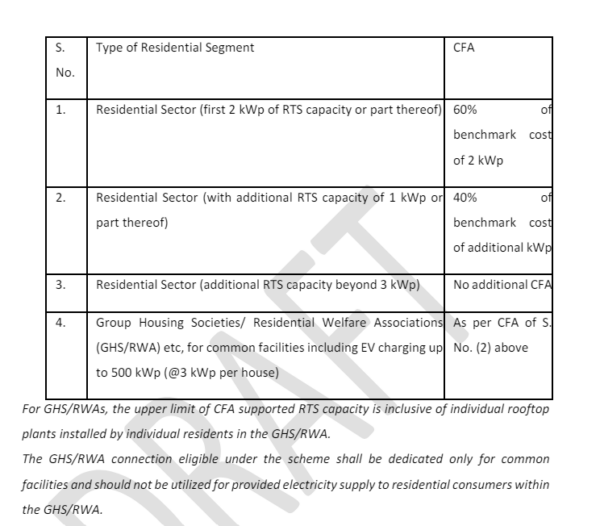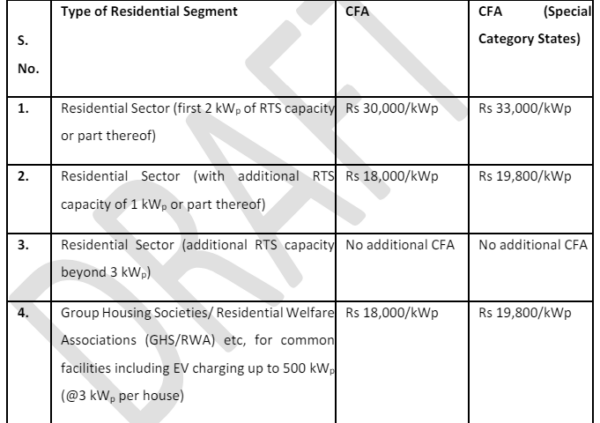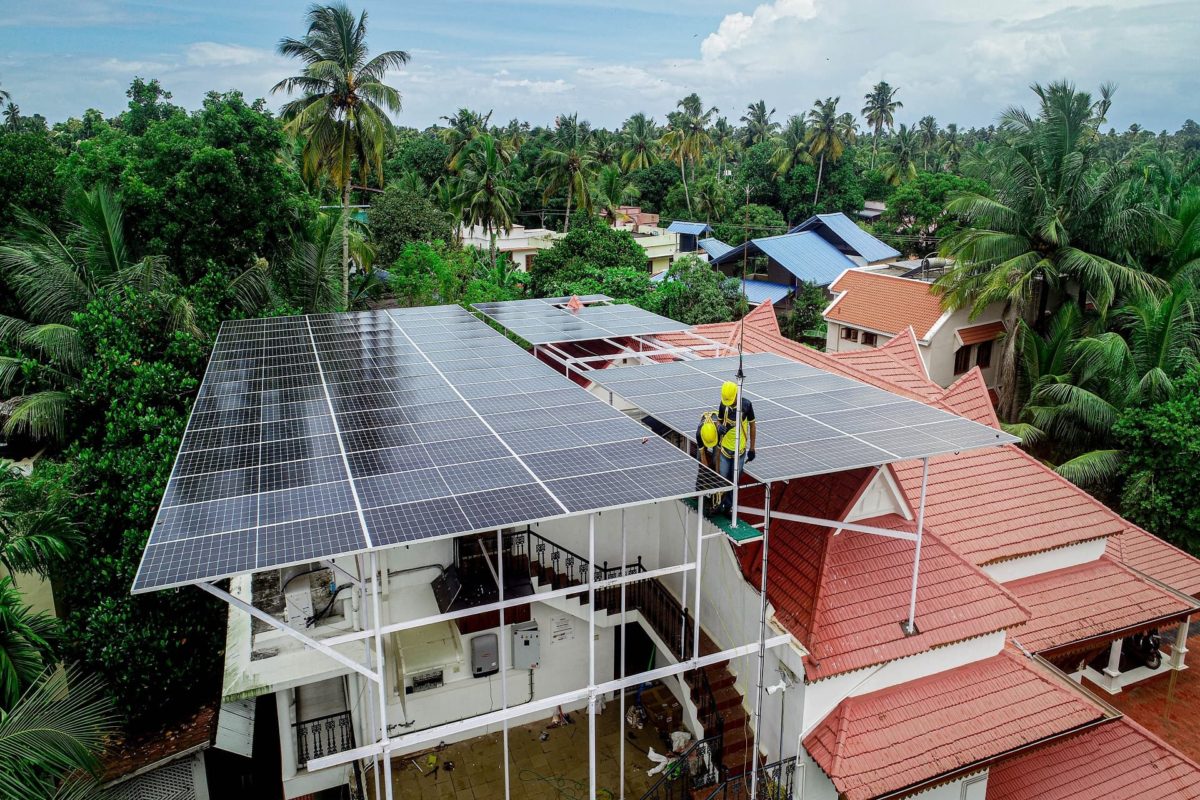The Ministry of New and Renewable Energy has released the draft guidelines for PM Surya Ghar: Muft Bijli Yojana which is aimed at installing rooftop solar (RTS) plants in one crore (10 million) households with subsidy (central financial assistance) support from the central government. The key objective of the scheme is to help provide free/low-cost electricity to one crore households up to 300 units of electricity per month by installation of rooftop solar.
The scheme has an outlay of INR 75,021 crore and is to be implemented till March 31, 2027. Out of this, the central financial assistance (CFA) component for residential households amount to INR 65,700 crore.
“The guidelines will be applicable for all applications received on the National Portal from the date of the launch of the scheme, i.e., Feb. 2024. The existing scheme of Phase II Grid Connective Rooftop Solar Programme having a budgetary outlay of INR 11,814 crore till 2025-26 shall be continued till the notification of the new scheme and get subsumed in the new scheme after such notification,” stated MNRE.
The CFA component of the scheme will be implemented through the National Portal for PM – Surya Ghar. Vendors will register on the National Portal and upload their details, including system offerings, price points, system design and specifications. The beneficiaries will apply on the National Portal and will get a unique application ID. They will select the vendor for their rooftop solar installation assisted by various decision-making tools on the Portal. The beneficiary and the vendor will mutually decide the rates, system specifications, customization of design as per location, value-added services, etc, subject to the minimum technical specifications mandated under the scheme.
To ensure that the customers are not overcharged, the MNRE will publish benchmark prices of solar modules, inverters, and other important equipment on the portal every year.
Once the designated vendor installs the RTS system after due approvals, the concerned distribution utility (Discom) will conduct a physical inspection, sign the necessary agreements with the beneficiary (net meter agreement or otherwise), conduct a checklist-based inspection and approve the Discom report. The scheme will establish minimum technical specifications required for rooftop solar to be considered eligible for the CFA. The CFA will be transferred to the concerned account of the beneficiary.
For the purpose of CFA, the residential RTS plant would be a grid-connected solar power system tagged to a particular residential power connection of the local Discom and will only include installations on a roof/terrace/balcony/elevated structures.
Solar modules used in the installation must satisfy the Domestic Content Requirement condition. That is, the modules must be domestically manufactured from domestically manufactured cells to be eligible for the CFA.
The CFA shall be irrespective of the size of the inverter installed. If a consumer installs a rooftop solar plant with a higher/lower rated inverter capacity than the number of modules, the CFA will be provided as per the rated DC capacity of the module system and not as per the inverter capacity.
The CFA will be as per the following table:

The benchmark cost for a 1 kW system is fixed at INR 50,000/kW for the first 2 kW of RTS capacity and INR 45,000 for the additional kW with effect from Feb. 13, 2024. The benchmark for special category States or union territories (Uttarakhand, Himachal Pradesh, J&K, Ladakh, States in the North East including Sikkim, Andaman and Nicobar and Lakshadweep) will be INR 55,000 for first 2 kW of RTS capacity and INR 49,500 for the additional kW of RTS capacity.
The CFA for the scheme with effect from the date of initiation, Feb. 13, 2024 is as follows:

The State/UT governments may supplement the CFA provided by the central government for the residential sector with an additional subsidy for RTS; however, this shall be subject to adherence to all scheme guidelines by the State.
This content is protected by copyright and may not be reused. If you want to cooperate with us and would like to reuse some of our content, please contact: editors@pv-magazine.com.









Sir interest rate are suppose to be @7 percentage but bank is charging 10.5 percent per lac
Very good scheme for Residential purpose May be implemented soon
Would like to get it
Very good schame
Good schame
In Mumbai Suburban areas housing society can install it & possible to take advantage of government scheme.
Want guidance for installation of solar panel on my bungalow
sir what is the norms 5kv